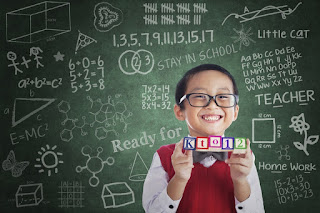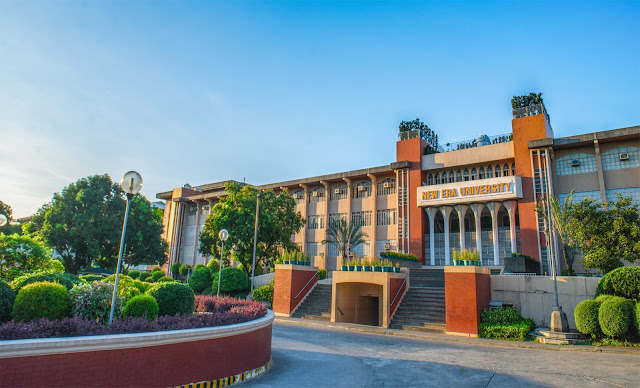Everything We Need To Know About K to 12.
BACK IN THE DAY
There was a time when you only have to spent a certain amount of years for studying. The normal years you need to spend in school is just 15 years or 16 years. That starts with 1 year in in Kindergarten, 6 years in Elementary, 4 years in High School, and 4 or 5 years in College depending on what course or major you will take.
This has been the norm here in the Philippines for the past few decades until the K-12 comes along.
A lot of questions come into mind upon the introduction of this new educational system. Questions like, "what is this about?", "why do we need this?", "is this necessary?", "why do we need to add more years in school?"...and such.
Well, the K-12 Program is more than just a necessity and adding years to the kid's study. Read this article to know what the program is all about and it's benefits.
A recent change in
the Philippines’ educational system was implemented starting in 2011. The K-12
curriculum was signed into law back in 2013, adding three years to the
country’s basic education curriculum.
The new K-12
curriculum guide requires all Filipino students to have one year of
kindergarten, six years of elementary schooling (grades 1 to 6), four years of
junior high school (grades 7 to 10), and two years of senior high school
(grades 11 to 12).
The Rationale Of It.
Prior to the
implementation of the K-12 curriculum guide, the Philippines was one of only
three countries in the world and the only one in Asia that still had only 10
years in basic education.
This has always been
seen as a disadvantage for our students who are competing in an increasingly
global job market. The longer educational cycle of the K-12 curriculum is
seen as critical in giving Filipino students a higher quality of education.
The Southeast Asian
Ministers of Education Organization – Innotech (SEAMEO-Innotech) found the
previous 10-year educational cycle to be congested, with a 12-year curriculum
squished into 10 years.
As a result,
Filipino students have trailed behind students around the world in the areas of
math, languages, and science. The new curriculum is aimed to fix that.
The K to 12
curriculum is designed to enable graduates to join the workforce right after
high school, and suitably prepare those who want to go on to higher education.
The new curriculum
will also support college graduates seeking work abroad. Developed countries,
according to the Department
of Education’s (DepEd) briefer, “view the 10-year education cycle as
insufficient.”
All in all, the
enhanced K to 12 curriculum is designed to provide a holistic education for
all. Now decongested, it will give students ample time to master basic academic
skills as well as to participate in co-curricular and community activities.
What the K-12 curriculum means for students
The transition began
in 2011, when the universal kindergarten was introduced. Starting in 2012,
schools already implemented the curriculum decongestion mentioned in the DepEd
briefer.
Public schools began
having half-day classes for grade one students, with the mother tongue as the
medium of instruction. Private schools also made adjustments in their own DepEd
accredited curricula.
The adaptation of
the K to 12 curriculum guide means that students will graduate a bit older
compared to those who graduated under the 10-year education cycle.
Far from being
disadvantageous, however, DepEd states that young adults graduating at age 18
or so will be more prepared to take on their tertiary education.
Remedial classes during the first year of college will
no longer be needed, as the high school curriculum will already be aligned with
the Commission on Higher Education’s (CHED) guidelines.
The government also encourages parents to think of the
K to 12 curriculum guide not as having two extra years of high school, but as
two years less of higher education.
Areas of specialization
Graduates of the new educational system will already
be equipped to join the workforce right away. This is through the help of the
electives to be offered during grades 11 to 12.
The electives, or areas of specialization, will
include the following:
- Academics for those who wish to pursue higher studies
- Technical-vocational for those who want to acquire employable skills after high school
- Sports and Arts for those who are inclined in the two fields.
Below is an outline of the K to 12 basic curriculum.
NOW that we know what the K to 12 is, let us read about what's the Government's take on this.
This year, our government expects to graduate and roll
out to college the first batch of senior high school students. In the same way,
this batch is the first to choose if they’ll continue to college or enter the
workforce. As they prepare, though, for the next challenge, a few still wonder
on the K to 12 programs in the country. Hence, to straighten out, let’s look
back and get updates on the K 12 curriculum in the Philippines six years after
its implementation.
Challenges Faced by Our Government
In a Business Mirror interview, DepEd Secretary Leonor
Briones claims that for 2017-2018, the Department created 40,104 teacher items
for the K-12 program. However, she also confesses that we still lack teachers
and classrooms to fill in its demands.
K-12 Status Updates under the Duterte
Regime
In the same interview, Briones stresses that
“additional items will be created throughout the year, depending on the actual
enrollment for SY 2017-2018.” In fact, she says they continue to arrange the
hiring of Higher Education Institutions (HEIs) faculty affected by the reform
until SY 2021-2022.
The interview capped off the latest status of the K-12
programs: SHS has used 55,680 K-12 classrooms, near completion of the 2014-2015
classroom backlogs, and registered 51.59% completion rate for the years 2014
through 2016.
Sources:







Comments
Post a Comment